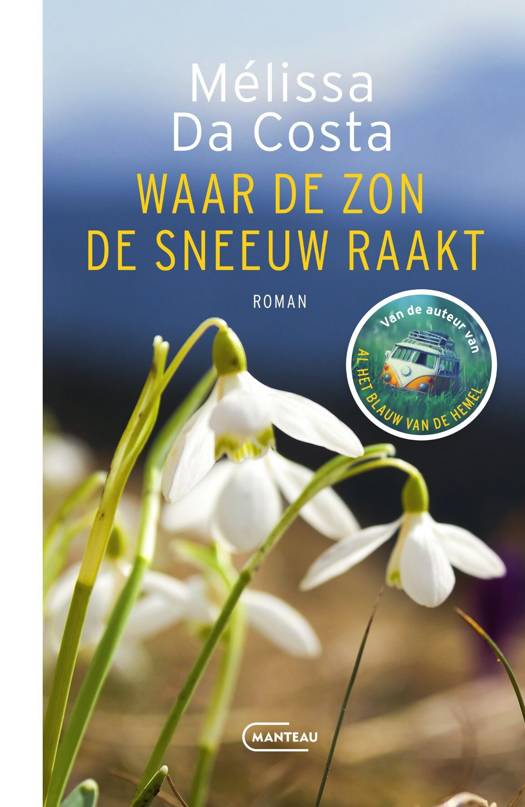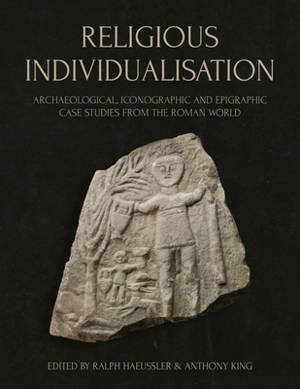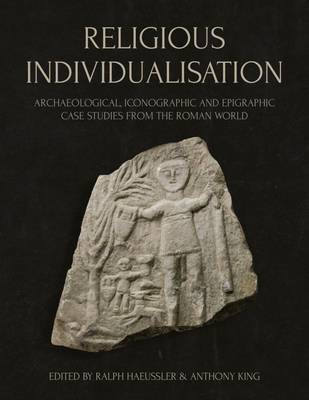
- Afhalen na 1 uur in een winkel met voorraad
- Gratis thuislevering in België vanaf € 30
- Ruim aanbod met 7 miljoen producten
- Afhalen na 1 uur in een winkel met voorraad
- Gratis thuislevering in België vanaf € 30
- Ruim aanbod met 7 miljoen producten
Zoeken
Religious Individualisation
Archaeological, Iconographic and Epigraphic Case Studies from the Roman World
Hardcover | Engels
€ 107,45
+ 214 punten
Omschrijving
The Roman world was diverse and complex. And so were religious understandings and practices as mirrored in the enormous variety presented by archaeological, iconographic, and epigraphic evidence. Conventional approaches principally focus on the political role of civic cults as a means of social cohesion, often considered to be instrumentalised by elites. But by doing so, religious diversity is frequently overlooked, marginalising 'deviating' cult activities that do not fit the Classical canon, as well as the multitude of funerary practices and other religious activities that were all part of everyday life.
In the Roman Empire, a person's religious experiences were shaped by many and sometimes seemingly incompatible cult practices, whereby the 'civic' and 'imperial' cults might have had the least impact of all. The authors rethink these methodologies, arguing for a more dynamic image of religion that takes into account the varied and often contradictory choices and actions of individual, which reflects the discrepant religious experiences in the Roman world. Is it possible to 'poke into the mind' of an individual in Roman times, whatever his/her status and ethnicity, and try to understand the individual's diverse experiences in such a complex, interconnected empire, exploring the choices that were open to an individual? This also raises the question whether the concept of individuality is valid for Roman times. In some periods, the impact of individual actions can be more momentous: the very first adoption of Roman-style sculpture, cult practices or Latin theonyms for indigenous deities can set in motion long-term processes that will significantly influence people's perceptions of local deities, their characteristics, and functions. Do individual choices and preferences prevail over collective identities in the Roman Empire compared to pre-Roman times? To examine these questions, this volume presents case studies that analyse individual actions in the religious sphere.
In the Roman Empire, a person's religious experiences were shaped by many and sometimes seemingly incompatible cult practices, whereby the 'civic' and 'imperial' cults might have had the least impact of all. The authors rethink these methodologies, arguing for a more dynamic image of religion that takes into account the varied and often contradictory choices and actions of individual, which reflects the discrepant religious experiences in the Roman world. Is it possible to 'poke into the mind' of an individual in Roman times, whatever his/her status and ethnicity, and try to understand the individual's diverse experiences in such a complex, interconnected empire, exploring the choices that were open to an individual? This also raises the question whether the concept of individuality is valid for Roman times. In some periods, the impact of individual actions can be more momentous: the very first adoption of Roman-style sculpture, cult practices or Latin theonyms for indigenous deities can set in motion long-term processes that will significantly influence people's perceptions of local deities, their characteristics, and functions. Do individual choices and preferences prevail over collective identities in the Roman Empire compared to pre-Roman times? To examine these questions, this volume presents case studies that analyse individual actions in the religious sphere.
Specificaties
Betrokkenen
- Uitgeverij:
Inhoud
- Aantal bladzijden:
- 336
- Taal:
- Engels
Eigenschappen
- Productcode (EAN):
- 9781789259650
- Verschijningsdatum:
- 23/03/2023
- Uitvoering:
- Hardcover
- Formaat:
- Genaaid
- Afmetingen:
- 170 mm x 242 mm
- Gewicht:
- 975 g

Alleen bij Standaard Boekhandel
+ 214 punten op je klantenkaart van Standaard Boekhandel
Beoordelingen
We publiceren alleen reviews die voldoen aan de voorwaarden voor reviews. Bekijk onze voorwaarden voor reviews.










